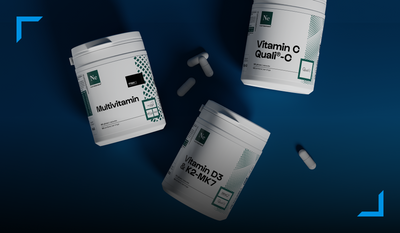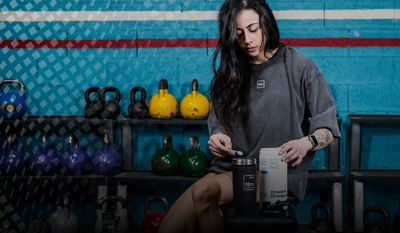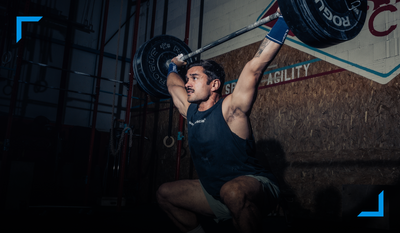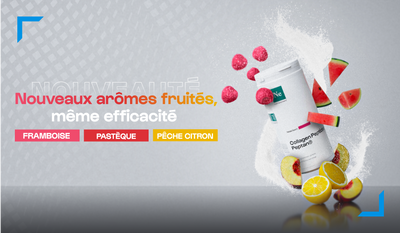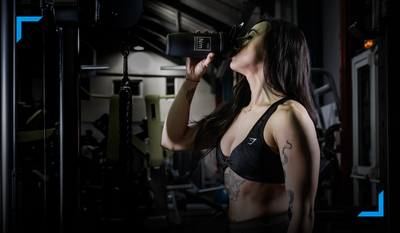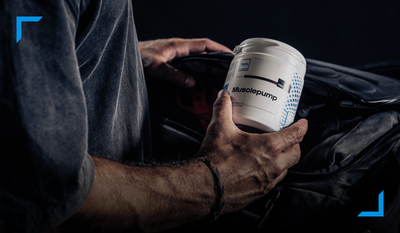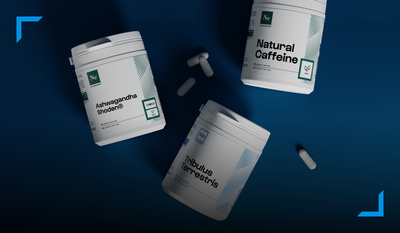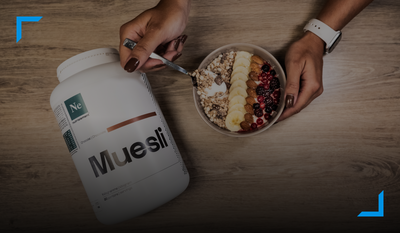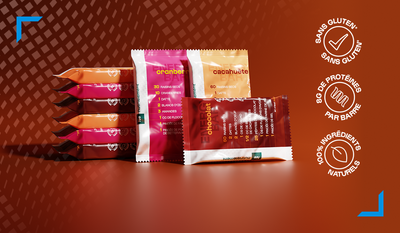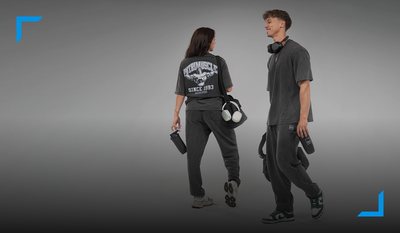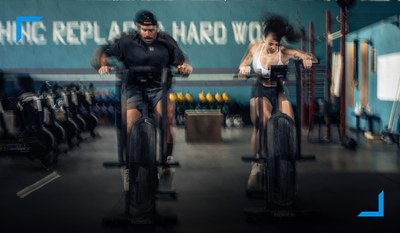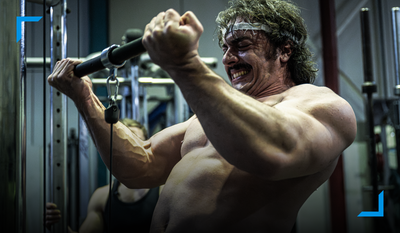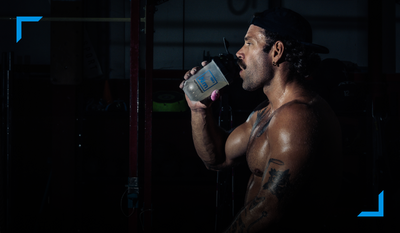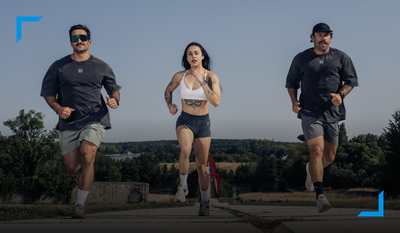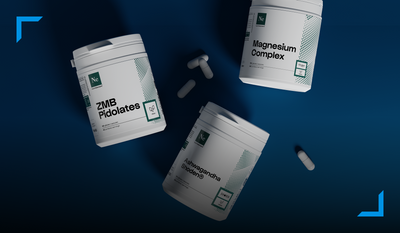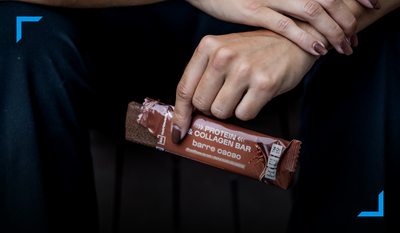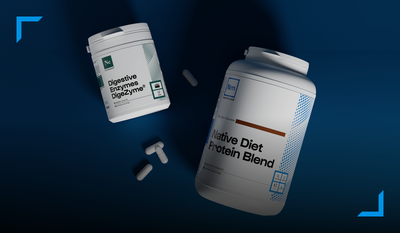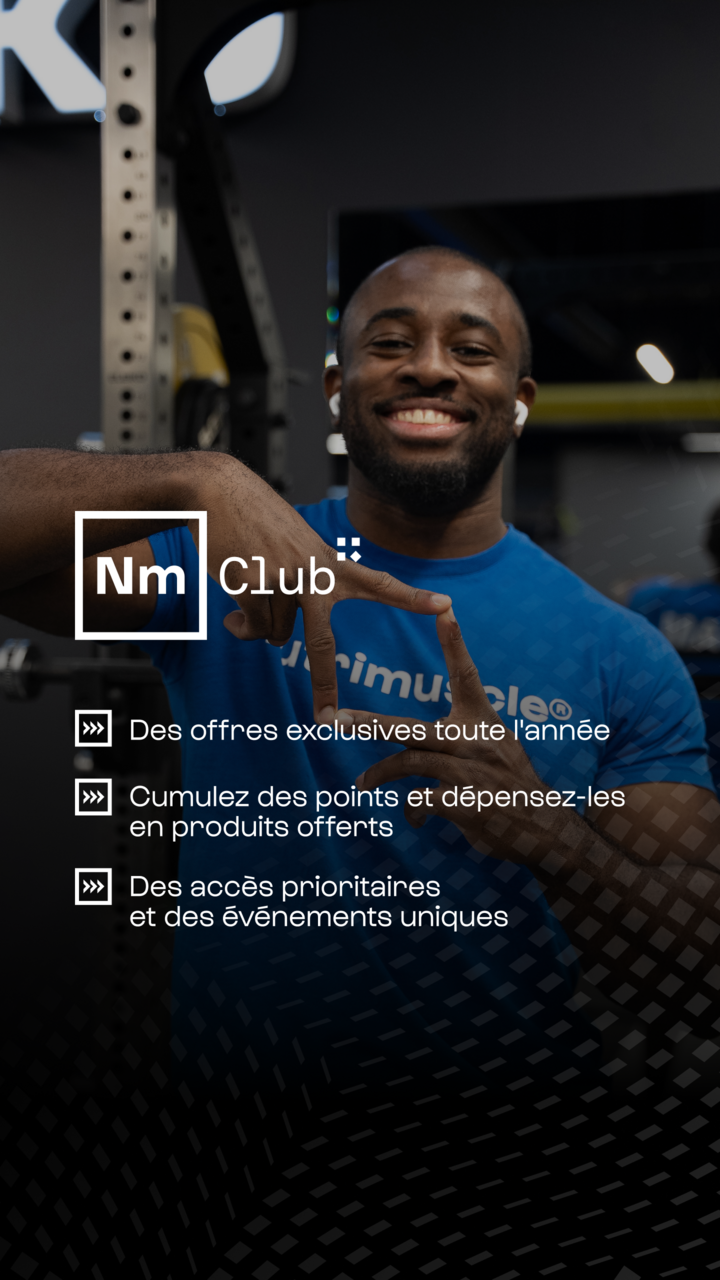0 commentaires
Whatever sport you practice, the risk of injury is constant. However, there are a multitude of solutions to avoid these injuries which risk harming your sporting progress in the long term.
Table of Contents
- The cause of injuries and prevention
- The Different Types of Sports Injuries
Causes of injuries and prevention
Lack of sleep
At the end of exercise, an injury can occur in the event of muscular and energetic fatigue. For this, it is necessary to have a good night's sleep in order to recover the energy needed for the next day but also to promote muscle regeneration. Research seems to suggest that reduced sleep duration is associated with an increased risk of injury. In addition, a study (1) on adolescent athletes, sleeping less than 8 hours per night, states that they were 1.7 times more likely to be injured than those sleeping at least 8 hours per night. One thing is certain, sleep restriction affects recovery processes and can increase risk factors for injury (2).
In addition, several studies show the difficulties that athletes have in falling asleep. One study (3) in particular, carried out on young athletes (107) over a whole year, showed sleep disturbance in 22% of athletes. Sleep difficulties occur in particular when practicing sports in the evening, due to the release of hormones such as adrenaline, noradrenaline and cortisol. This is why it is recommended not to practice at least 2 to 3 hours before bedtime.
Glycine intake is recommended to improve sleep (4). This amino acid acts as a brain inhibitory neurotransmitter that improves sleep quality. With deeper and better sleep, glycine reduces the athlete's need to sleep. Glycine can be taken in synergy with Collagen to prevent injuries during training and/or ZMP for more relaxing effects, rapid falling asleep and more restful sleep.
A bad warm-up
It is now obvious that before any effort, the importance of warming up must be emphasized. Indeed, a good warm-up session allows the temperature of the muscles to rise (ideally from 36 °C to 39 °C). A sufficiently long warm-up will have beneficial effects on the elasticity of the muscle and will then improve the quality and duration of the training. The lack of heat and therefore of flexibility of the muscle is generally a factor in muscle and tendon injuries. In addition, the increase in heat causes the dilation of blood vessels and thus accelerates blood circulation to the muscles. Very often, it is recommended to warm up for at least 10 minutes for 60 minutes of sporting activity.
In order to boost your warm-up, taking a dietary supplement such as Musclepump is recommended. Musclepump is composed of several amino acids that act in synergy to optimize your session. The beta-alanine, citrulline and arginine present in MusclePump act as a nitric oxide (NO) booster, thus promoting congestion and muscle oxygenation. BCAAs have an anti-fatigue action by blocking the harmful effects of tryptophan and serotonin.
Lack of concentration
In order to achieve an optimal and effective session without risk of injury, it is important to stay focused and work on your mental preparation. Indeed, some athletes are subjected to high pressure, especially during a competition or a high-importance event. Lack of concentration, stress, fatigue, can lead to physical problems. In addition, regular and intense practice of sport generally leads to overtraining, which can be associated with an increased risk of injury. Micro-lesions of the muscles due to excessive exercise are a source of chronic inflammation of the muscle. This state, associated with reduced concentration and a drop in motivation, increases the risk of injury. Injuries that immobilize the athlete are, in turn, a source of anxiety and stress and accentuate the physical and psychological fragility of the athlete (5).
Good concentration not only keeps muscles alert and promotes physical performance, but also avoids the risk of a vicious circle: stress to injuries to stress.
The Focus Mix composed of Citicoline, Astaxanthin and caffeine helps improve your concentration on all levels. It promotes energy and brain health, improves neurotransmitter activity and provides energy and motivation. In order to reduce your stress level, we recommend taking a natural supplement with relaxing properties: Lactium.
Inadequate diet
The importance of nutrition is paramount when practicing physical activities. Indeed, the body draws even more on its reserves when the muscles are heavily used: on average, an athlete who trains regularly will need an intake of 2750 kcal/day compared to 1950 kcal for a sedentary person. The energy provided to the body comes mainly from the intake of micronutrients and nutrients present in food. If during exercise the body does not have enough or the right resources, the risk of injury is present. According to a study (6) conducted on 340 adolescent athletes, those who respected the recommended nutritional intake reduced the risk of injury by 64%.
Important to the nutrition of any athlete, carbohydrates must constitute 50% of our calorie intake, according to the recommendations of the National Agency for Health and Environmental Safety (ANSES). Lipids, twice as caloric as carbohydrates and proteins, constitute an important source of energy and participate in muscle recovery and hormonal balance (stress reduction). And finally, protein plays an important role in the process of building and rebuilding muscles. Indeed, during physical exercise, the level of amino acids contained in the proteins of our body decreases, leading to muscle damage. As soon as the exercise or competition is over, it is therefore necessary to replenish the stock of muscle proteins used.
Our organic oat flakes are a real source of simple and effective carbohydrates. Our Musclewhey aims to adopt the role of "builder" by providing rapid muscle anabolism thanks to its richness in amino acids, as well as a basic action on the synthesis of muscle proteins. Its contribution facilitates recovery and reconstruction. Taking Omega 3 doubles the anabolic reaction when amino acids and insulin are present in the blood. Omega-3 also helps to reduce the impact and the harmful effects of muscle aches, by activating recovery and regeneration.
A deficiency in vitamins and minerals
Due to the intense efforts required, the athlete demands much more from his body than an average person. Indeed, his caloric expenditure, which is much higher, leads to an increase in his needs. During his permanent activity and heavy sweating, the athlete evacuates essential nutrients, particularly minerals. Thus, the intake of vitamins and minerals must be adjusted.
By strengthening the antioxidant defenses of athletes thanks to Multivitamins, the physical integrity of athletes is protected (7). Taking vitamins would also help fight against muscle injuries, especially cramps (8). In addition, minerals such as copper, zinc, calcium and iron play an important role in preventing injuries. They participate in the formation of elastin and collagen, as do vitamins A and C.
Lack of collagen
Collagen is the protein that provides joints, muscles and tendons with their cohesion, strength and elasticity. It is also responsible for regenerating cartilage. This is why it is essential in the process of preventing injuries but also in the case of healing.
After each muscular effort, the degradation of collagen in the joints and tendons intensifies. Supplementation is therefore necessary in order to balance the missing levels. In addition, Collagen is known to fight against osteoarthritis (9,10,11).
Composed of type I and II collagen, glucosamine, chondroitin and vitamin C, our joint Nutrimix has been specially designed to fully cover needs. N-acetylglucosamine in synergy with chondroitin sulfate accelerates cartilage regeneration and therefore joint recovery (12-13-14). It also has an anti-inflammatory action that is beneficial for joint integrity (15-16).
The Different Types of Sports Injuries
There are different types of injuries depending on the sport you practice and the intensity at which you exercise. Among them, cramp, contusion or even strain. How do these injuries occur and what are their characteristics?
Muscle injuries
Cramp : A cramp is not an injury per se but rather a temporary dysfunction. It manifests itself by a very painful contraction of the muscle. Cramps occur in sports when you suffer from muscle fatigue or dehydration. It is, most of the time, relieved by stretching.
Contusion : When a heavy weight falls on you for example, the contusion is a trauma on a muscle, which manifests itself by pain at the impact, sometimes accompanied by swelling. This injury can also be linked to a bruise (sometimes called blue), caused by the rupture of small vessels located under the skin, also following a shock or trauma.
Strains: Strains are muscle lengthening that occurs after excessive strain on the muscle. The fibers are stretched and eventually break. This injury manifests itself as partial pain, similar to a very limited tear. Sports activity is still possible but somewhat painful.
Tear: A tear is a stretching mechanism, more painful and more restrictive. We can talk about a stage 2 tear. At this stage, practicing a physical activity and even walking is made difficult.
Tear: A tear, like a muscle fracture, is very painful and can cause a fall. This injury manifests itself by rapid swelling of the affected limb and is often compared to a stab wound.
Joint injuries
Tendinitis: Tendinitis is an inflammation of the tendons, often due to overly repetitive movements, during a sporting or professional activity. Following the friction of the tendon against the bone, the fibers then partially break, causing pain.
Chondroitin Sulfate helps protect joints and regenerate tendons and cartilage.
Osteoarthritis : Osteoarthritis is the most common joint disease, characterized by the destruction of the cartilage that connects bones. It manifests itself by stiff, painful and swollen joints for days. The pain is permanent.
Bursitis : Bursitis is an inflammation of the bursa, due to excessive movement such as excessive strain during long workouts. It manifests itself by a pocket and swelling at the knee or back of the elbow.
Sprain: A sprain is a trauma to the ligaments, most often located in the ankle. It is caused by a sudden and violent movement, accompanied by a twist. The sprain manifests itself by disabling pain at the level of the joint during its use and sometimes more or less moderate swelling.
Dislocation: Dislocation, better known as dislocation, is the displacement of two bony ends within the joint. It is generally caused following a violent shock. During a dislocation it is impossible to make a natural movement because the pain is so strong. Immobilization and rehabilitation are often recommended.
Studies
(1) Milewski MD, Skaggs DL, Bishop GA, et al. Chronic lack of sleep is associated with increased sports injuries in adolescent athletes. J. Pediatr. Orthop. 2014; 34:129–33.
(2) Deng-Fa Yang. Sleep deprivation reduces recovery from high-intensity exercise-induced muscle damage in a mouse model. Life Sciences Volume 235, October 15, 2019, 116835.
(3) Watson, Andrew M. MD, MS, et al. Sleep and Athletic Performance. Current Sports Medicine Reports: 11/12 2017 - Volume 16 - Issue 6 - p 413-418.
(4) Kohji Sato. Why is there a pronounced caudal-rostral gradient in brain glycine content. Medical Hypotheses Volume 120, November 2018, pages 1-3.
(5) Hasan GERÇEK. KTO Karatay University. Comparison of Sport Injury Anxiety of Athletes Doing Sports on Different Surfaces. February 18, 2021.
(6) P von Rosen, A Frohm et al. Too little sleep and an unhealthy diet could increase the risk of sustaining a new injury in adolescent elite athletes. 2017 Nov;27(11):1364-1371.
(7) Naziroglu M. Oral vitamin C and E combination modulates blood lipid peroxidation and antioxidant vitamin levels in maximal exercising basketball players. Cell Biochem Function. 2010 Jun;28(4):300-5.
(8) Chan-P. Randomized, double-blind, placebo-controlled study of the safety and efficacy of vitamin B complex in the treatment of nocturnal leg cramps in elderly patients with hypertension. J Clin Pharmacol. 1998. 38: p. 1151.
(9) Adam, M. Therapie der Osteoarthrose, Welche Wirkung haben Gelatinepraparate? Therapiewoche (1991) 41:2456–2461.
(10) Seeligmuller, K. Dem Knorpel auf die Sprunge helfen. Therapiewoche (1993) 43:1810–1813.
(11) Barnett, ML Treatment of rheumatoid arthritis with oral type II collagen. Arthritis & Rheumatism (1998) 41:290–297.
(12) Kessler MA Volume changes in the menisci and articular cartilage of runners: an in vivo investigation based on 3-D magnetic resonance imaging. Am J Sports Med. 2006 May; 34(5):832-6.
(13) Poolsup N., et al. Glucosamine long-term treatment and the progression of knee osteoarthritis: systematic review of randomized controlled trials. Ann Pharmacother. 2005 Jun; 39(6):1080-7.
(14) Reginster JY Long-term effects of glucosamine sulfate on osteoarthritis progression: a randomized, placebo-controlled clinical trial. Lancet 2001 Jan 27; 357:251-56.
(15) Bell GA. Use of glucosamine and chondroitin in relation to mortality. Eur J Epidemiol. 2012 Jul 25. [Epub ahead of print]
(16) Brasky TM. Use of glucosamine and chondroitin and lung cancer risk in the VITamins And Lifestyle (VITAL) cohort. Cancer Causes Control. 2011 Sep;22(9):1333-42. Epub 2011 Jun 25.




